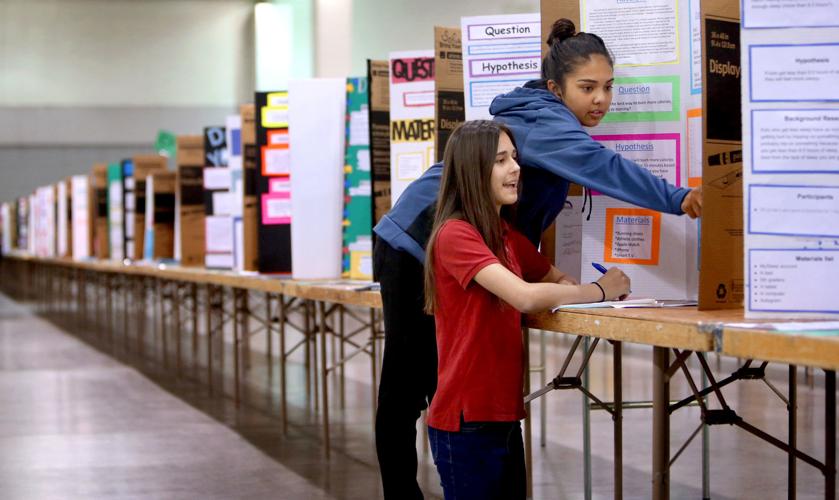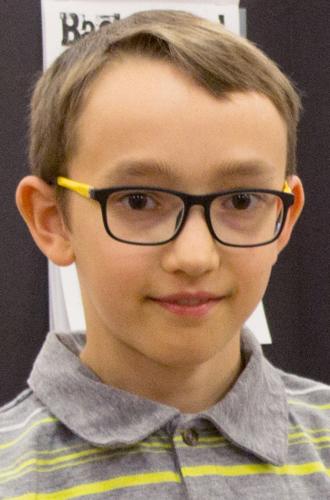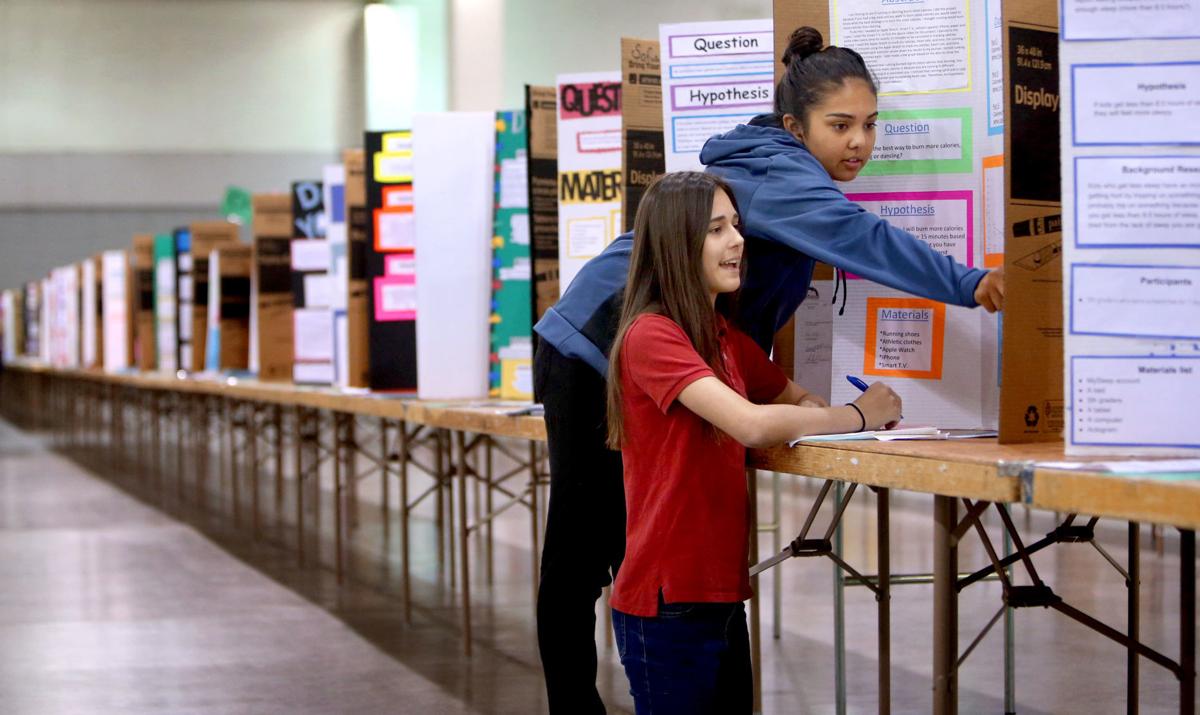It’s SARSEF week, and organizers of the large engineering and science fair say they are seeing an increase in students participating in the event and more projects that have evolved into areas relevant to their lives.
So, old experiments like which music makes plants grow faster or what’s the better paper towel have been replaced with projects on cyber-bullying and school safety, they said.
On Wednesday, 6,630 K-12 students will set up 2,100 science fair projects in the Tucson Convention Center Exhibition Hall for the Southern Arizona Research, Science and Engineering Foundation science fair, known as SARSEF.
Judging will take place Thursday. Friday evening, the Exhibition Hall will be open to the public to view the projects and to participate in 50 science demonstrations and interactive displays. Awards will be handed out Saturday.
This was a record-breaking year for SARSEF: 2,100 is the most projects competing at the regional fair, while 59 percent of the projects and participants are from Title I schools — schools that receive financial aid to support a large low-income student population. About 56 percent of the students participating are girls.
It’s not just the numbers that show progress.
Overall project quality is improving every year, said Liz Baker, deputy director of SARSEF. She and the rest of the SARSEF team attribute much of this improvement to Brooke Meyer, director of educational outreach.
Within the last five years, Meyer has focused on getting out to schools to help parents and teachers approach projects with a depth that wasn’t possible before — SARSEF was run by volunteers until only a few years ago.
Outreach became even more important when they realized that award winners were mostly white, male and middle class — unrepresentative of Southern Arizona’s population.
Meyer has traveled from Yuma to Florence to Santa Cruz County, she said, “to provide parents, teachers and students with the understanding of how to do the science fair.
“We go through how to take what the child is interested in and how to take that through scientific practices, doing research and the next steps. We do this with science and engineering, with both teachers and parents,” Meyer said.
Meyer said she works “to look for what the school needs and not just saying here’s what you’re going to do.”
“I’m a retired teacher, and I didn’t teach science. I didn’t know how,” Meyer said. “I didn’t open doors for kids (back then); I have to do this now.”
As a result, more students with varying backgrounds are participating in the fair. Organizers said 75,000 Southern Arizona students participated in their school’s science fairs three years ago. This year, 95,000 did.
Outreach gives students, parents and teachers the knowledge, skills and tools they need to do a project.
But Meyer’s biggest piece of advice? Allow the students to do projects on what they’re interested in.
“Go with your hearts over the internet,” Meyer said.
Far fewer projects explore “Which paper towel works the best?” and “Which detergent can remove this stain?” said Kathleen Bethel, CEO of SARSEF.
“We tell them unless you’re doing the laundry, then don’t do that project.”
They also like to remind students that the first experiment to test which music helps plants grow fastest was first presented at SARSEF 55 years ago.
More students are doing projects that are more relevant to their lives.
For example, students investigate cyber-bullying, and, “One student wanted to figure out what objects in your backpack can protect you from shootings,” Bethel said.
This year, the most popular topic was environmental science and environmental engineering. Most of those projects focused on water purity and safety. Behavioral science was the second-largest category.
Letting students choose their topic and “supporting whatever that might be” gives students “freedom and ownership over their projects so that they take pride in their work and take it seriously,” said Jennifer Maxwell, science teacher at Emily Gray Junior High School, 11150 East Tanque Verde Road.
Trevor Koessler, a seventh-grader at Emily Gray, likes LEGOs and is very creative, according to Maxwell. He built different “RESCUBOT” prototypes out of LEGOs that were designed to help during natural disasters, he said. He was testing which design climbed best up a steep slope.
Abigail Roberts, an eighth-grader at Emily Gray, built a flotation device for drones flying over water to keep them from sinking should they crash. Her dad travels around the world to collect drone footage and thought this would be useful to him, she said.
“I try to think of problems to solve in the community” and that are interesting to her, said Karah Mayer, an eighth-grade student at Emily Gray, and her classmates all agree.
Mayer investigated whether shady areas correlated with more bufflegrass. She found it does not. She chose this topic because it was a problem she heard about in her community on the east side of town.
She tied for first place in the plant sciences category at the state science and engineering fair, which took place March 22-23, and earned a RealTimeSTEAM Award of Excellence in Phoenix.
Brett Lewis, a seventh-grade student at Emily Gray, did a project to test if Enchroma glasses — which claim to restore color vision in the colorblind and deficient — can actually helped colorblind people pass the Ishihara colorblindness test. His brother and uncle are colorblind. He said he loves science and solving problems.
“This is the age where they become aware that they are part of a bigger system,” Maxwell said.
The level of quality and engagement are “very typical of our district,” said Greg Miller, principal of Emily Gray, a school of 383 students. He admits this is due to having a district of parents and teachers already engaged in science and resources available to support that engagement.
He recognizes not all schools and districts are as fortunate.
And that’s what SARSEF is trying to do — level the playing field by providing resources and support to schools, teachers and parents who need it so their students can have the chance to find their passion for science.









